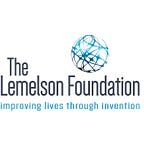Students should be forging paths, not following them
By Rachel Jagoda Brunette, Program Officer, The Lemelson Foundation
Before winter break, I had the privilege to sit in on a new class at that was launched by TIE Oregon as part of the TIE Young Entrepreneurs program.
The course teaches the principles of invention and entrepreneurship by guiding the students through real-world problem identification, brainstorming and prototyping solutions, and planning businesses around their inventions.
The class took place at Benson Polytechnic High School in Portland, which is not what most people think of as a training ground for top technology start-up leaders. Benson is a school of more than 1,100 students, and many of them are from minority groups and low-income families. Most Benson students have had a tough time in traditional academic environments.
The class I observed was no exception. Benson’s curriculum, which focuses on job training in fields like health care and manufacturing, hadn’t kept these students engaged. Struggles with their studies and behavioral challenges were commonplace. An unacceptable number were on their way to joining the 41 percent of Oregon students who fail to earn a high school diploma.
But as soon as volunteers from TIE showed the teens that they weren’t just students but future inventors and entrepreneurs, something changed. By the time I was sitting in that classroom a few weeks later, these students were engaged and taking command of their own education.
Workforce training programs are an essential part of helping millions of Americans find living-wage jobs. As our economy adapts to changing technologies, workforce training (and retraining) creates sustainable career pathways for those with outdated skill sets. But we should not let the success of these training programs seduce us into shuttling students — particularly those who do not appear to be immediately college bound — through narrowly defined educational pathways. Nor should we let current industry needs define emphases in K12 and higher education to prep students for their specific job openings. These approaches are great for creating structure and helping new graduates find jobs right away. But at the end of the day, that strategy prioritizes businesses’ needs over the needs of young students.
Well-designed invention and entrepreneurship programs empower students to make their own decisions about their futures. Opportunities to explore, fail, and learn at their own pace are far better for students who bristle at the top-down approach in classroom instruction. One of the students at Benson told me, “I like thinking of inventing new things, because that way I can be the boss.” Moreover, it is important to change educational paradigms so that students and teachers realize that failure is a necessary part of learning and that all students are capable of solving meaningful problems. This shows everyone — parents, administrators, policy makers, and the students themselves — that these kids have great options for their future.
Oregon’s economic growth depends on companies big and small growing and creating jobs to bolster our tax base and pump money into the economy. If larger companies show students that they can pay well and offer challenging and interesting jobs, local youth will be motivated to prepare themselves for those positions. Schools and universities, though, should focus on invention, creativity, problem solving, and turning products into businesses that both solve critical challenges and are financially sustainable. That approach serves all students, and all companies will benefit from new workers with an entrepreneurial spirit.
When I was at Benson, I told a quick story about some wildly successful student inventors who got support from VentureWell, a longtime partner of The Lemelson Foundation that provides seed money and support to teams of university-based aspiring entrepreneurs. Afterwards, a student pulled me aside and said, “People keep telling me about different jobs. I don’t really want to work in a factory or anything like that. But that was a good story. I want to be like those guys.”
Let’s work together to make that possible.
